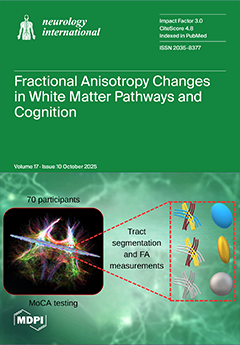Objectives: Pulmonary embolism (PE) is an uncommon but potentially fatal complication of acute ischaemic stroke (AIS). Its global burden and prevention remain incompletely defined. We performed a systematic review and meta-analysis (PEARL-AIS) to estimate prevalence, risk factors, outcomes, and prophylactic efficacy, with GRADE evidence appraisal.
Methods: Following PRISMA 2020 and MOOSE guidelines, five databases (PubMed, Embase, Cochrane, Scopus, Web of Science) were searched (1995–2024). The protocol was prospectively registered (OSF s25ny). Random-effects models (DerSimonian–Laird; REML sensitivity) were used to pool prevalence and odds ratios; heterogeneity was evaluated with I
2, Cochran’s Q, and τ
2. Influence (leave-one-out) and subgroup analyses for prevalence and mortality of PE in AIS were explored. Bias was assessed using the Modified Jadad Scale; overall certainty was graded with the GRADE framework.
Results: Twenty-four studies met the inclusion criteria (
n = 25,666,067), of which seventeen studies (
n = 23,637,708) contributed to pooled prevalence analyses. The pooled prevalence of PE after AIS was 0.40% (95% CI 0.33–0.49), approximately six-fold higher than in the general population, with considerable heterogeneity (I
2 > 90%, Cochrane classification). The pooled mortality among AIS patients with PE was 12.9% (95% CI 1.6–31.7). Mortality risk was significantly higher in AIS patients with PE (OR 4.96, 95% CI 2.98–8.24). Atrial fibrillation (29%), cancer (19%), and smoking (23%) were common; hypertension (54%) and diabetes (23%) were prevalent but not predictive, with diabetes showing a paradoxical protective association (OR 0.88, 95% CI 0.84–0.92). Pharmacological prophylaxis was associated with a reduced risk of PE (OR 0.64, 95% CI 0.46–0.90; I
2 = 0%), supported by moderate-certainty evidence.
Conclusions: PE is an uncommon but often fatal complication of AIS. Traditional venous thromboembolism predictors underperform in this context, suggesting a stroke-specific thromboinflammatory mechanism linking the brain and lung axis. Despite considerable heterogeneity and low-to-moderate certainty of evidence, pharmacological prophylaxis demonstrates a consistent protective effect. Systematic PE surveillance and tailored prophylactic strategies should be integral to contemporary stroke care, while future studies should refine risk stratification and elucidate the mechanistic underpinnings of this
brain–lung thromboinflammatory continuum.
Full article






